Advanced Technologies Used in Digitizing the Cultural Heritage of Northwestern Colchis: The Experience of the Markul Expedition
Abstract
:1. Introduction
2. Materials and Methods
- Title.
- Type of site.
- Ancient (antique or local) place name (if any).
- Link to mention in sources (if any).
- Bibliography (if any).
- Names of researchers of the site (if researched).
- Years of study of the site (if researched).
- Description of the site.
- Level of preservation.
- Modern use of the territory.
- Area (if defined).
- Dating.
- Interpretation.
- −
- large, e.g., fortifications, architectural complexes, ancient settlements, etc.;
- −
- medium, e.g., excavations, architectural structures (temples, fortifications such as towers, sections of walls);
- −
- small, e.g., artifacts, architectural details, and other similar elements that can be transported to a photography studio with convenient shooting and lighting conditions.
3. Results and Discussion
- −
- receiving an orthophotomap of an object;
- −
- obtaining a detailed 3D model.
- −
- the flight height of the drone is approximately 15 m;
- −
- the overlap of adjacent frames is 60–80%;
- −
- the camera is tilted 90° to the horizon.
- −
- in vertical shooting, upright details, such as walls, etc., are not partially or fully shot, and the texture is heavily distorted or smeared on the final picture;
- −
- even in the absence of vegetation (shooting was carried out in February 2021), shooting vertically down through the crown of trees and bushes does not allow the surface of the earth, the fragments of walls, or fortress towers to be captured. In this scenario, it is nearly impossible to automatically determine the relevant points, which leads to the situation in which a series of pictures with trees are not recognized and deleted. When there are readable objects (the remains of a fortress wall, buildings, roads, open spaces with grass) and tree crowns, the pictures are easily recognized.
- −
- vertical objects, such as walls, towers, trees, etc., appeared in significantly better detail, and the texture was of acceptable quality;
- −
- the ground under single and sporadic trees was better displayed.
- −
- with a 90° camera angle the open objects only without significant vertical details can be photographed;
- −
- the more complex the object is geometrically, the more vertical details it contains, and so the more difficult it is to photograph. Preferably, a series of flights with shooting angles of 90°, 60°, and 45° is required. The flight path should be characterized by a series of oncoming “snakes” at several azimuths, depending on the geometry of the object.
- −
- the flight height should be adjusted according to the height of the surrounding obstacles;
- −
- the overlap of shots should be 60–80%;
- −
- in order to avoid unusable shots due to trees, if the area is heavily forested, it is necessary to shoot the area from a higher position.
- (1)
- Lighting. Bright sunlight leads to the images with strong contrast, which make the automatic determination of control points almost impossible, thus affecting the accuracy of the model. High-contrast shots also greatly damage the texture quality. Therefore, cloudy weather with diffused soft light is preferable for shooting. Overcast conditions are also inconvenient since the illumination drops dramatically, which requires a long exposure, and the majority of the objects are located in the forest. With this type of shoot, the photographs will sometimes be blurry and unsuitable for processing.
- (2)
- Preparation of the object. To obtain a high-quality 3D model, the key point is to preliminarily clear the vegetation. All bushes, branches, foliage, and grass should be removed from the object, as they greatly interfere with the shots at the processing stage. Tree trunks, however, practically do not affect this, since they are easily cut out of the finished model.
- (3)
- Shooting edges and corners. A thorough survey of the corners of the buildings is vital for high-quality stitching of the adjacent wall surfaces. It is better to capture more shots at the corners than artificially stitch the model from several parts later.
- −
- the use of a white fabric when shooting excludes any color from light reflections;
- −
- separation of the object from the surface of the earth excludes dense shadows (with the use of a pedestal, stand);
- −
- the use of diffused artificial lighting in the form of a ring lamp excludes oblique shadows or the soft diffused light of an overcast sky;
- −
- using a turntable was beneficial.
4. Conclusions
- (1)
- Physiography and aerial photography of the study areas.
- (2)
- Fixing the current state of the sites and architectural features; obtaining plans, projections, and sections.
- (3)
- Obtaining 3D models of sites; video visualization.
- (4)
- Documenting excavations; obtaining plans, sections, excavation profiles.
- (5)
- The fixation of finds.
- (6)
- Obtaining 3D models of artifacts; accumulating a databank of finds to create a virtual exhibition for the Markul settlement museum.
- (7)
- Camera processing of the material filmed during the season, which allowed us to analyze objects and artifacts, measurements, drawings, and sections remotely as all archaeological material remained in the Republic of Abkhazia; remote work with 3D images of excavations in the off-season also allowed us to plan the research for the next season.
- (8)
- The exchange of data with experts, which allowed us to provide a 3D model of an object or artifact to specialists via the Internet, displaying it from different sides, which made it easier to obtain an expert opinion.
- (9)
- The restoration of the original form of partially fragmented artifacts; the virtual reconstruction of archaeological sites.
Author Contributions
Funding
Institutional Review Board Statement
Informed Consent Statement
Data Availability Statement
Conflicts of Interest
References
- Chrysanthi, A.; Katifori, A.; Vayanou, M.; Antoniou, A. Place-Based Digital Storytelling. The Interplay between Narrative Forms and the Cultural Heritage Space. In Emerging Technologies and the Digital Transformation of Museums and Heritage Sites. RISE IMET 2021. Communications in Computer and Information Science; Shehade, M., Stylianou-Lambert, T., Eds.; Springer: Berlin, Germany, 2021; Volume 1432, pp. 127–138. [Google Scholar] [CrossRef]
- Bruno, N. Photogrammetric Techniques for Promotion of Archaeological Heritage: The Archaeological Museum of Parma (ITALY). Int. Arch. Photogramm. Remote Sens. Spat. Inf. Sci. 2016, XLI, 243–250. Available online: https://www.academia.edu/40177957/PHOTOGRAMMETRIC_TECHNIQUES_FOR_PROMOTION_OF_ARCHAEOLOGICAL_HERITAGE_THE_ARCHAEOLOGICAL_MUSEUM_OF_PARMA_ITALY (accessed on 25 December 2021). [CrossRef]
- Wallace, C.A.B. Photogrammetry in Mediterranean Archaeology. Master’s Thesis, University of Waterloo, Waterloo, ON, Canada, 29 March 2016. Available online: https://uwspace.uwaterloo.ca/handle/10012/10344 (accessed on 25 December 2021).
- Patias, P.; Olga, G.; Charalampos, G.; Anastasios, S.; Maria, T. Photogrammetric Documentation and Digital Representation of Excavations at Keros Island in the Cyclades. In Proceedings of the 22nd CIPA Symposium Great Learning & Digital Emotion, Kyoto, Japan, 11–15 October 2009; Available online: https://www.cipaheritagedocumentation.org/wp-content/uploads/2018/12/Patias-e.a.-Photogrammetric-Documentation-and-Digital-Representation-of-Excavations-at-Keros-Island-in-the-Cyclades.pdf (accessed on 25 December 2021).
- Stamnas, A.; Kaimaris, D.; Georgiadis, C.; Patias, P. Comparing 3D digital Technologies for Archaeological Fieldwork Documentation. The Case of Thessaloniki Toumba Excavation, Greece. In Proceedings of the 28th CIPA Symposium Great Learning & Digital Emotion, Beijing, China, 28 August–1 September 2021; Volume XLVI-M-1-2021, pp. 713–720. Available online: https://www.researchgate.net/publication/354206543_COMPARING_3D_DIGITAL_TECHNOLOGIES_FOR_ARCHAEOLOGICAL_FIELDWORK_DOCUMENTATION_THE_CASE_OF_THESSALONIKI_TOUMBA_EXCAVATION_GREECE/fulltext/612c382938818c2eaf6c530e/COMPARING-3D-DIGITAL-TECHNOLOGIES-FOR-ARCHAEOLOGICAL-FIELDWORK-DOCUMENTATION-THE-CASE-OF-THESSALONIKI-TOUMBA-EXCAVATION-GREECE.pdf (accessed on 25 December 2021). [CrossRef]
- Porter, S.T.; Roussel, R.; Soressi, M. A Simple Photogrammetry Rig for the Reliable Creation of 3D Artifact Models in the Field. Lithic Examples from the Early Upper Paleolithic Sequence of Les Cottés (France). Adv. Archaeol. Pract. 2016, 4, 71–86. [Google Scholar] [CrossRef]
- Zakrzewski, P. Geodesy and Photogrammetry in Archaeology. Advanced documentation methods used by the Kuwaiti-Polish Archaeological Expedition 2019. In Stories Told around the Fountain. Papers Offered to Piotr Bieliński on His 70th Birthday; Pieńkowska, A., Szeląg, D., Zych, I., Eds.; University of Warsaw Press: Warsaw, Poland, 2019; pp. 759–776. Available online: https://www.academia.edu/41267074/Geodesy_and_photogrammetry_in_archaeology_Advanced_documentation_methods_used_by_the_Kuwaiti_Polish_Archaeological_Expedition?email_work_card=view-paper (accessed on 25 December 2021).
- Trebeleva, G.V. Markul Settlement in Eastern Abkhazia. In New Archaeological Projects: Reconstructing the Past; Makarov, N.A., Ed.; Institute of Archaeology: Moscow, Russia, 2019; pp. 144–147. [Google Scholar]
- Demers, M.N. Fundamentals of Geographic Information Systems, 3rd ed.; Wiley India Pvt. Limited: New Delhi, India, 2008; p. 484. [Google Scholar]
- Trebeleva, G.V.; Glazov, K.A.; Kizilov, A.S.; Sakania, S.M. Application of 3D-Photogrammetry of Archaeological Objects in Mountainous and Wooded Areas of the Western Caucasus. In Proceedings of the VI (XXII) All-Russian Archaeological Congress in Samara, Samara, Russia, 12–14 September 2020; Volume 3, pp. 178–180. Available online: https://elibrary.ru/download/elibrary_46281139_86597726.pdf (accessed on 14 February 2022).
- Trebeleva, G.V.; Sakania, S.M.; Glazov, K.A.; Kizilov, A.S.; Yurkov, G.Y. Late Antique and Medieval Temples of Abkhazia: GIS, Research Using Photogrammetry and Creation of 3D Models. Archaeol. Geoinform. 2021, 10. Available online: https://www.archaeolog.ru/media/periodicals/agis/AGIS-10/Trebeleva/page1.html (accessed on 25 December 2021). [CrossRef]
- Trebeleva, G.; Kizilov, A.; Glazov, K.; Yurkov, V.; Yurkov, G. Photogrammetry in the Study of the Antique and Medieval Archaeological Site of Markul (Village Markula, Ochamchira Region, Republic of Abkhazia) in Northwestern Colchis Area (Black Sea Coast of the Caucasus). Geosciences 2020, 10, 489. [Google Scholar] [CrossRef]
- Luis-Ruiz, J.M.D.; Sedano-Cibrián, J.; Pereda-García, R.; Pérez-Álvarez, R.; Malagón-Picón, B. Optimization of Photogrammetric Flights with UAVs for the Metric Virtualization of Archaeological Sites. Application to Juliobriga (Cantabria, Spain). Appl. Sci. 2021, 11, 1204. [Google Scholar] [CrossRef]
- Trebeleva, G.; Glazov, K.; Kizilov, A.; Sakania, S.; Yurkov, V.; Yurkov, G. Roman Fortress Pitiunt: 3D-Reconstruction of the Site Based on the Materials of Archaeological Research and Geological Paleoreconstructions. Appl. Sci. 2021, 11, 4814. [Google Scholar] [CrossRef]
- Trebeleva, G.V.; Kizilov, A.S.; Glazov, K.A.; Khondziya, Z.G.; Yurkov, G.Y. Defensive Constructions of the Markula Hillfort: The Dating Revisited. Brief Commun. Inst. Archaeol. 2019, 256, 230–242. Available online: https://www.archaeolog.ru/media/ksia/ksia-256-redu.pdf#page=230 (accessed on 14 February 2022). [CrossRef]
- Sakania, S.M.; Trebeleva, G.V. Late Antique and Medieval Christian Churches of the North-Eastern Black Sea Region. Catalog. Volume 1. Western Abkhazia (Gagra, Gudauta, Sukhum Regions); Magnitogorsk Printing House: Magnitogorsk, Russia, 2019; p. 201. [Google Scholar]
- Lebedev, M.A. The Use of Photogrammetry in the Excavation of Ancient Egyptian Rock Tomb Complexes: Prospects and Limitations of the Method. Archaeol. Geoinform. 2021, 10. Available online: https://www.archaeolog.ru/media/periodicals/agis/AGIS-10/Lebedev/page1.html (accessed on 25 December 2021). [CrossRef]
- Grushin, S.; Sosnovskyi, I. Photogrammetry in Archeology-Methods and Perspectives. Theory Pract. Archaeol. Res. 2018, 1, 99–105. [Google Scholar] [CrossRef]
- Galishcheva, E.V.; Glazov, K.A. Archaeological Heritage in the Format of Digital Technologies of the Exposition and Exhibition Space of the Museum of the History of the Resort City of Sochi. In Proceedings of the Museum: Past, Present and Future: Materials of the Interregional Scientific and Practical Conference (Felitsyn Readings-XXI), Krasnodar, Russia, 11–15 October 2019; pp. 59–62. [Google Scholar]
- Kizilov, A.S. Individualization of Teaching Landscape Design for University Students, Taking into account their Dominant Types of Thinking. Ph.D. Thesis, Scientific and Educational Center of the Russian Academy of Education, Sochi, Russia, 27 December 2004. (In Russian). [Google Scholar]
- Trebeleva, G.V.; Sakania, S.M.; Lobkovskii, V.A.; Kizilov, A.S. Stone Art Feline Images of Medieval Abkhazia (based on recent artifacts found during Markul expedition). Strat. Plus 2021, 5, 147–156. [Google Scholar] [CrossRef]
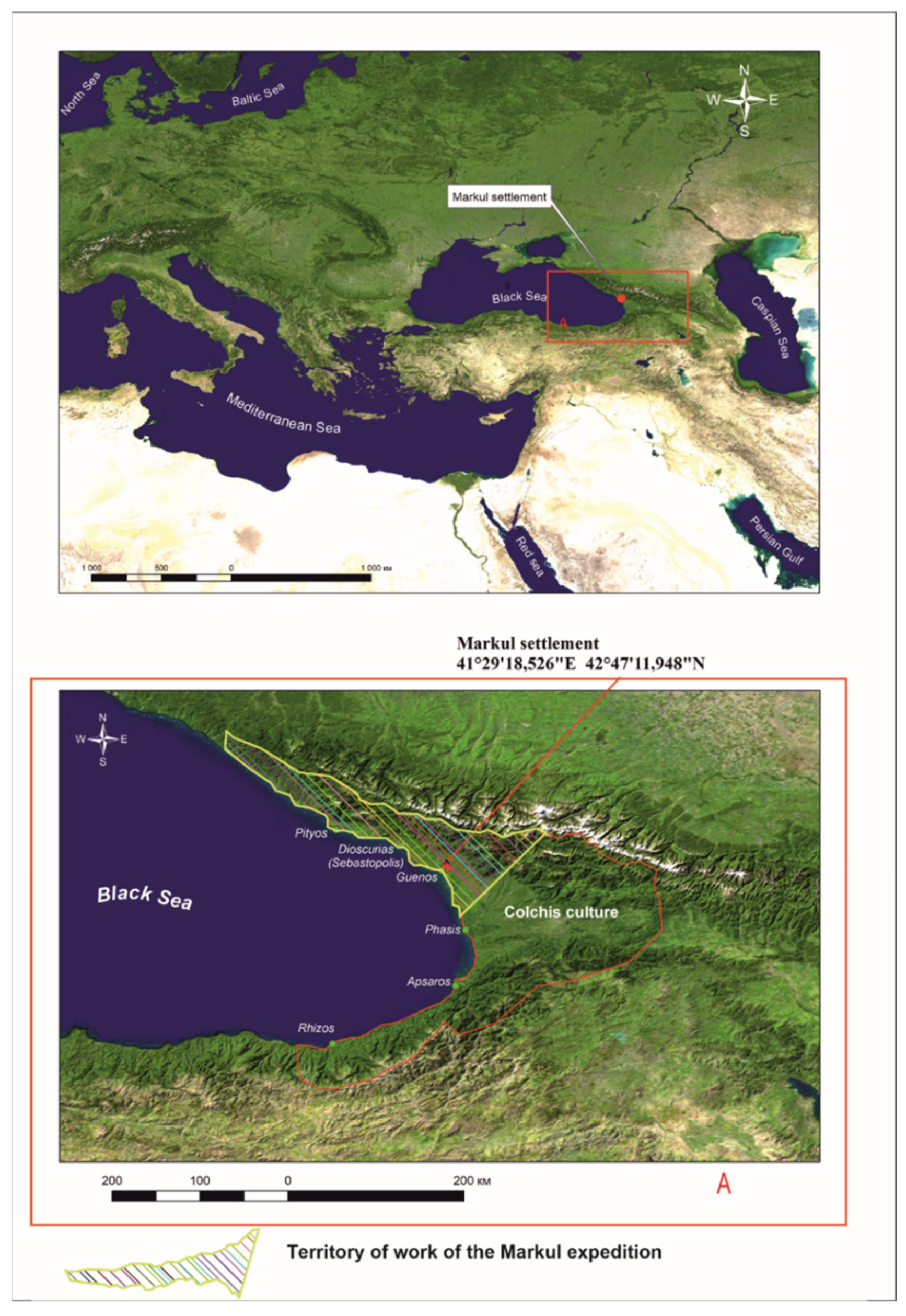
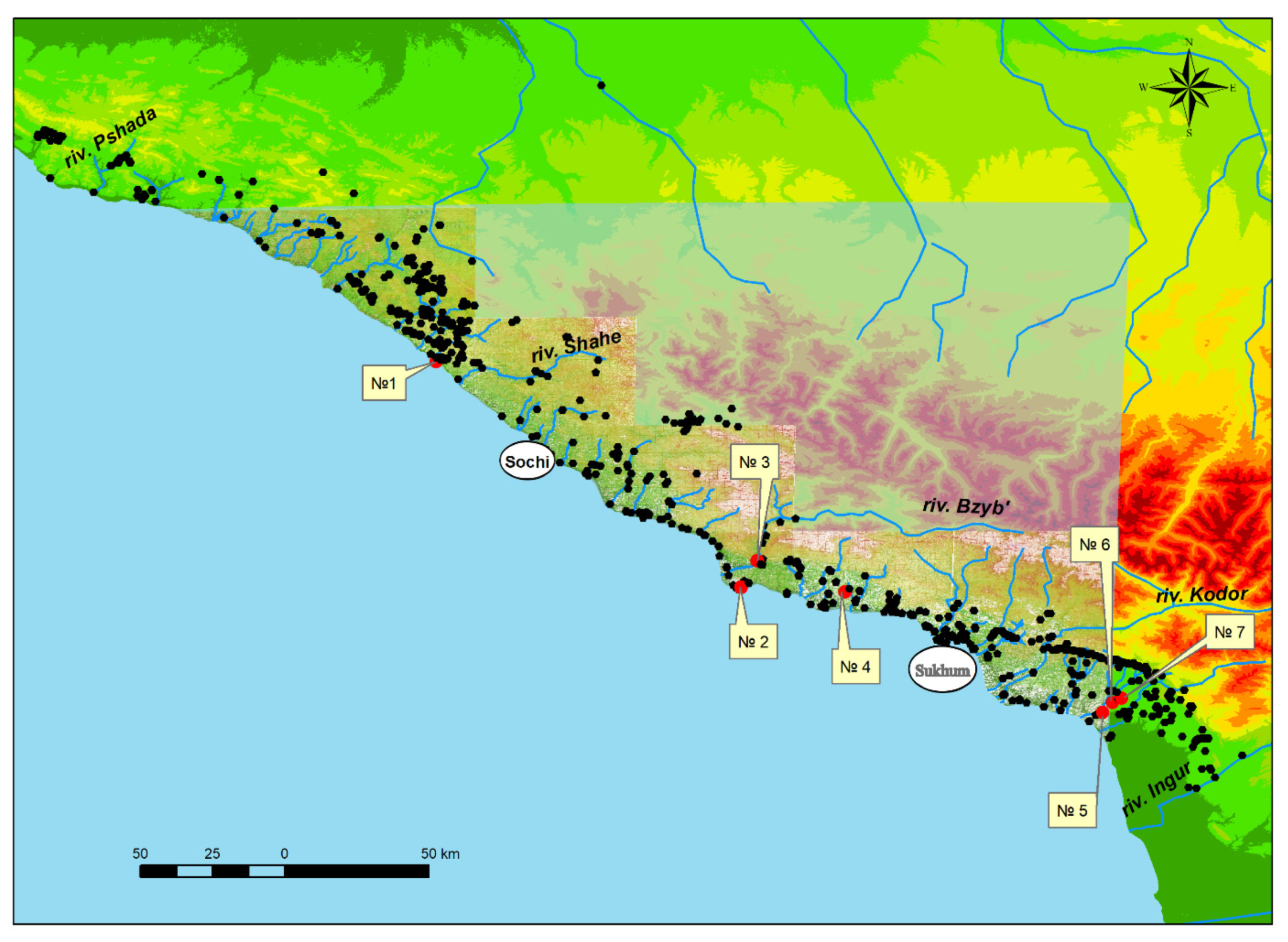

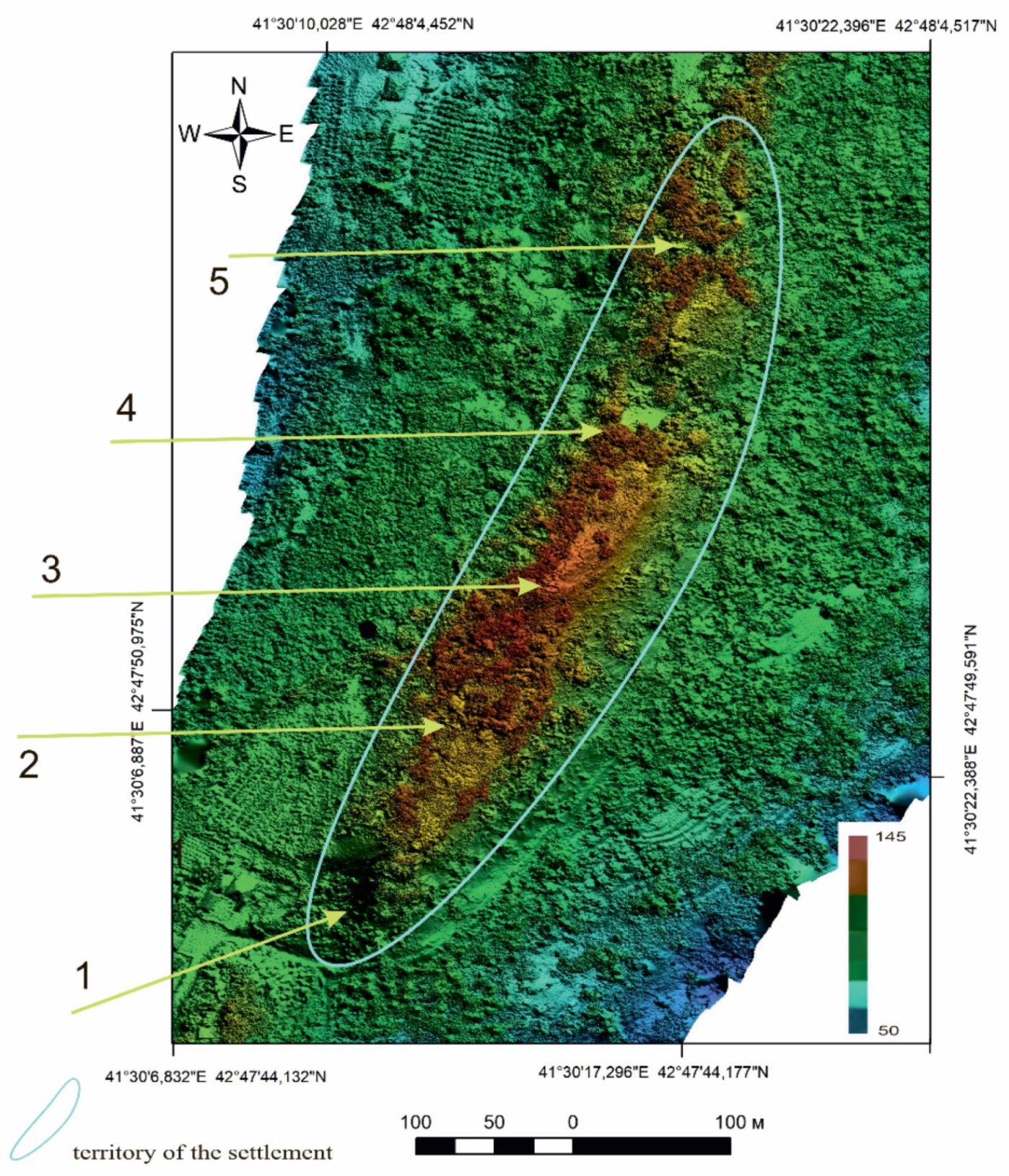
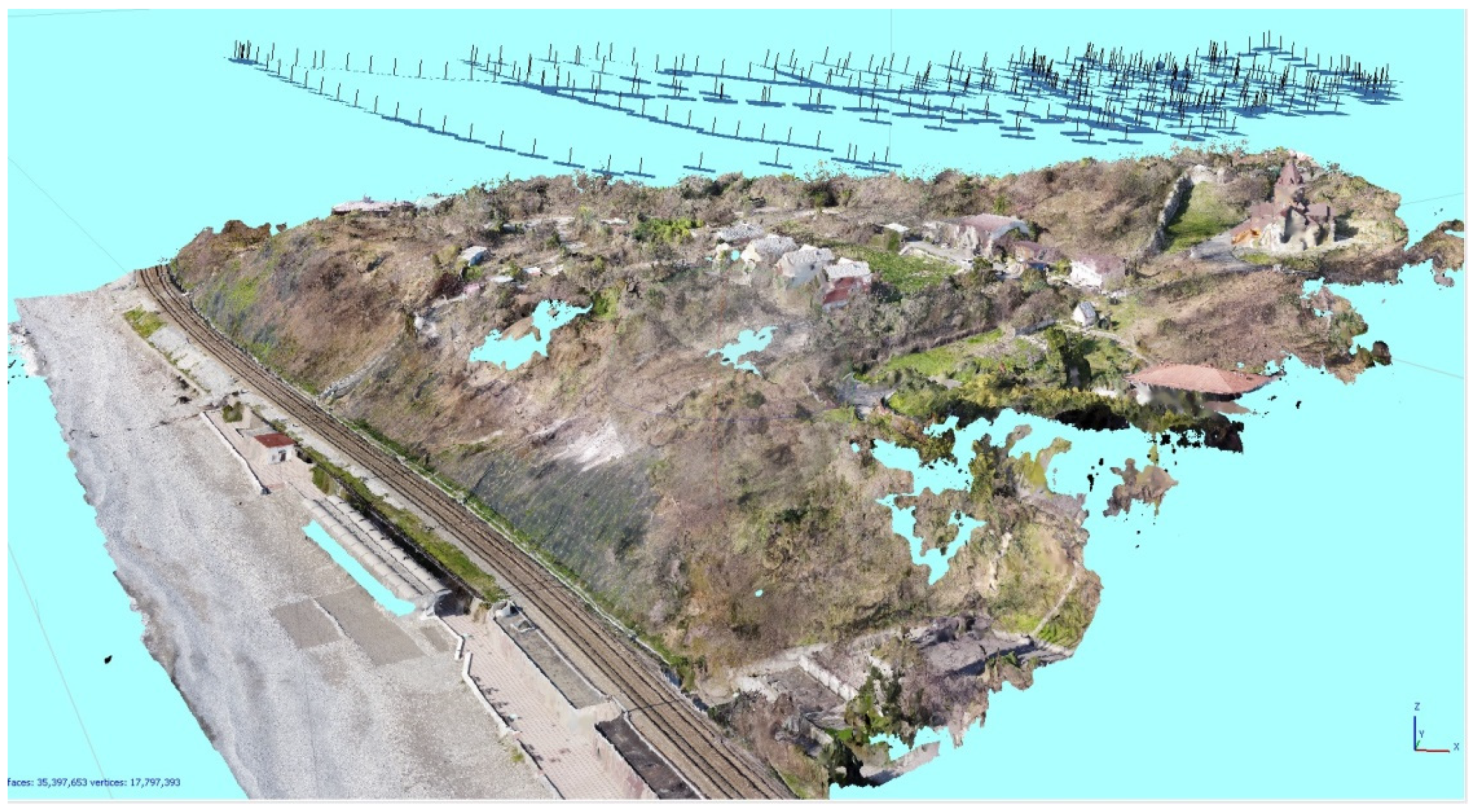
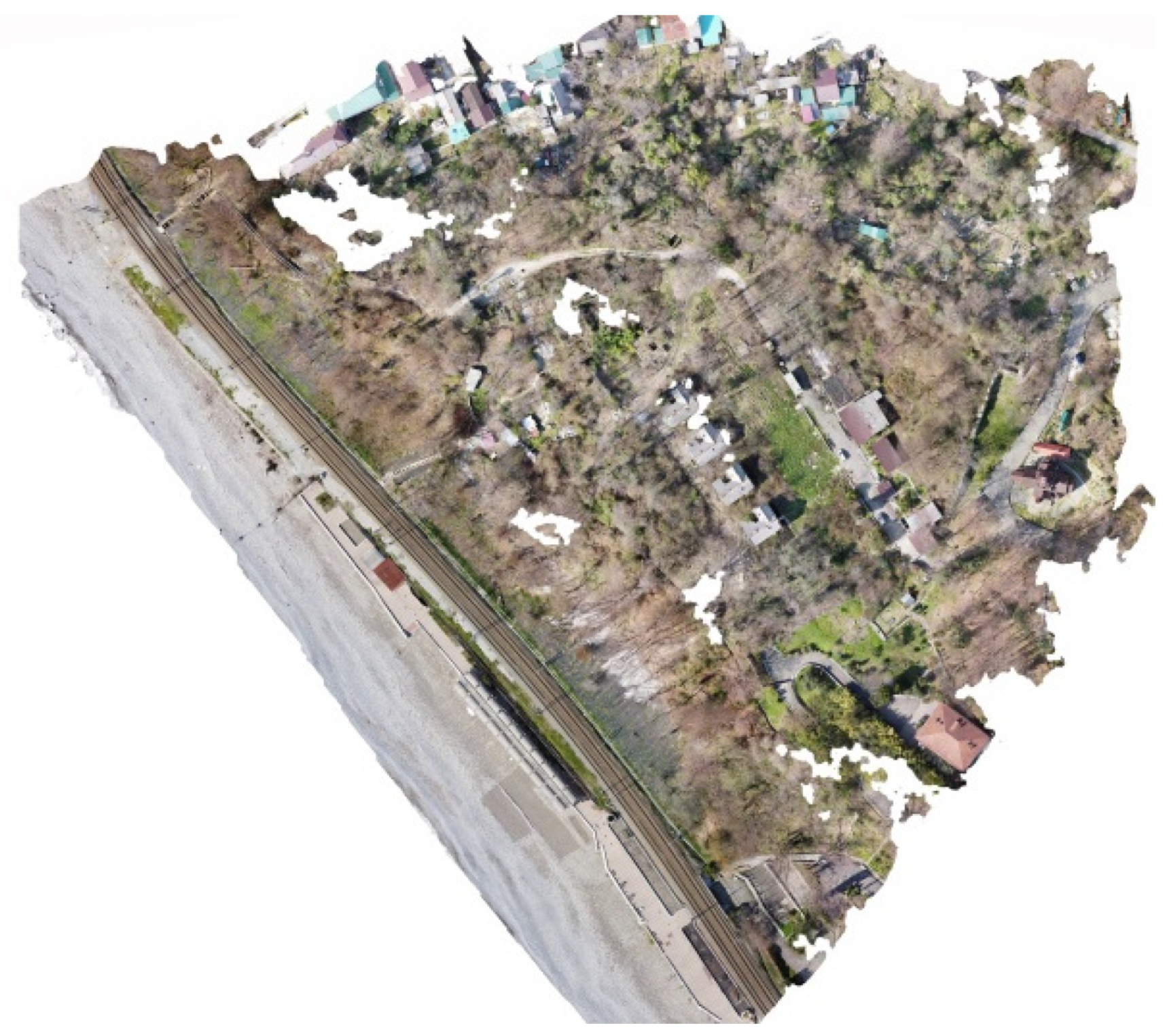
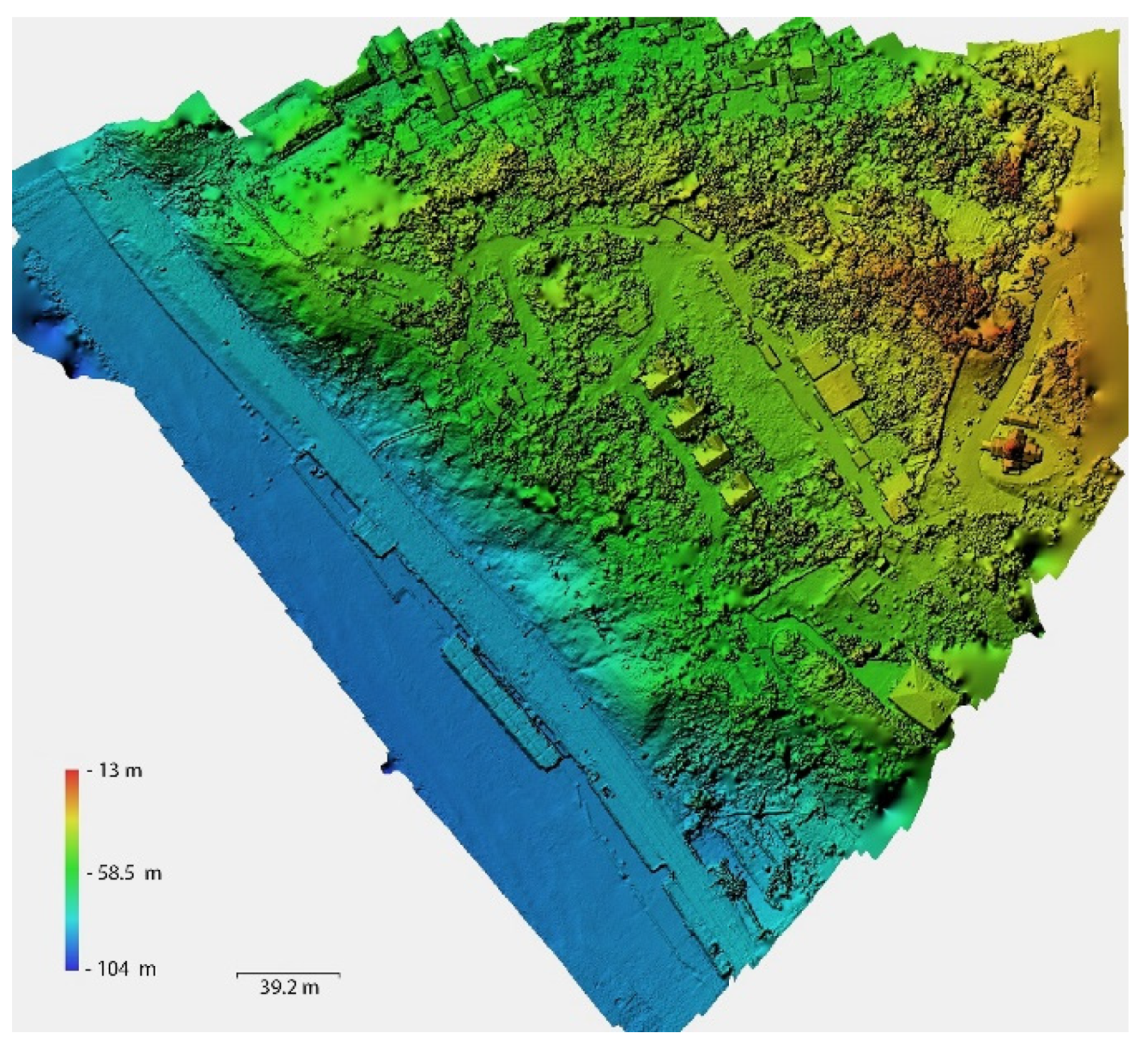

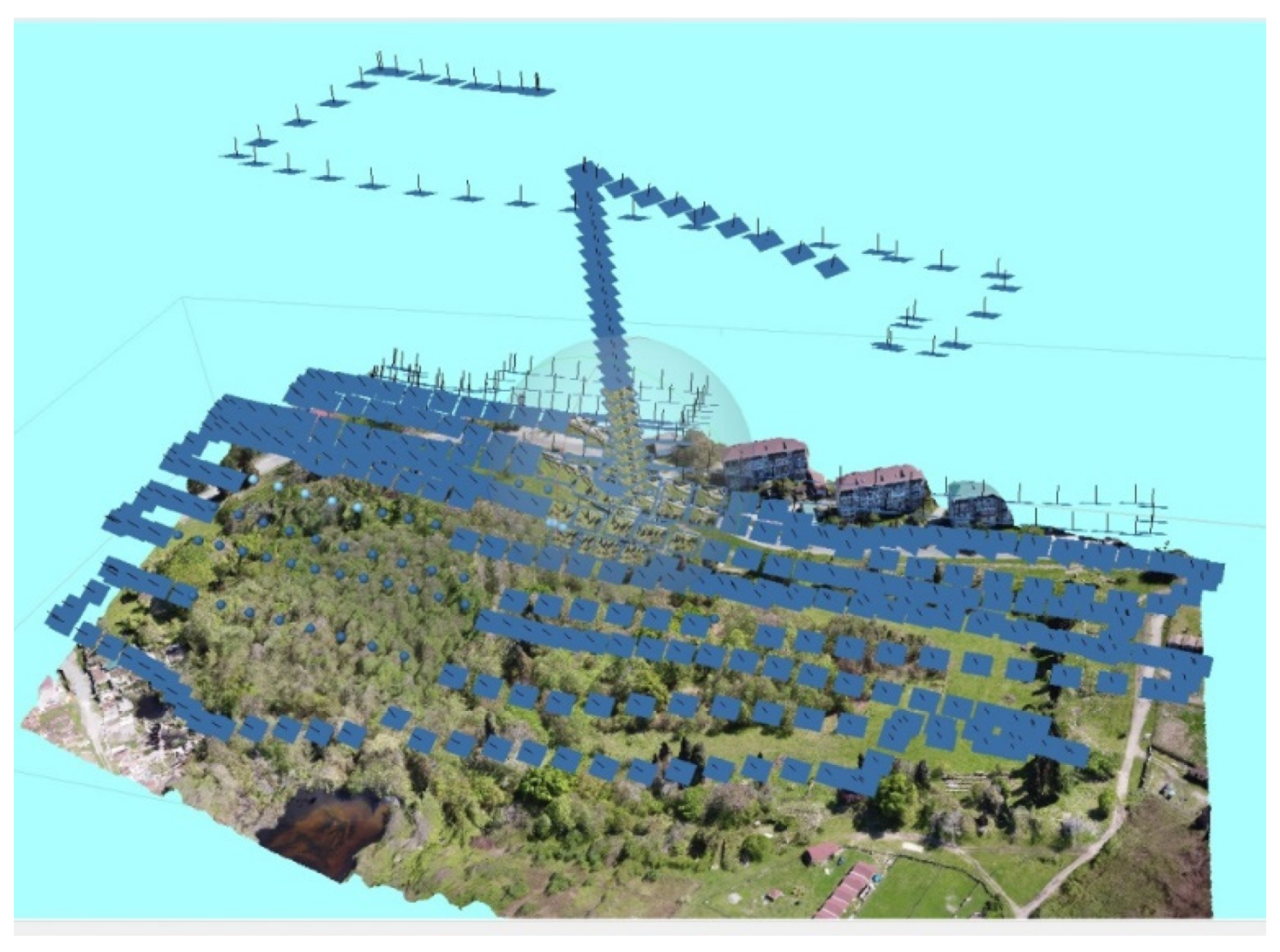

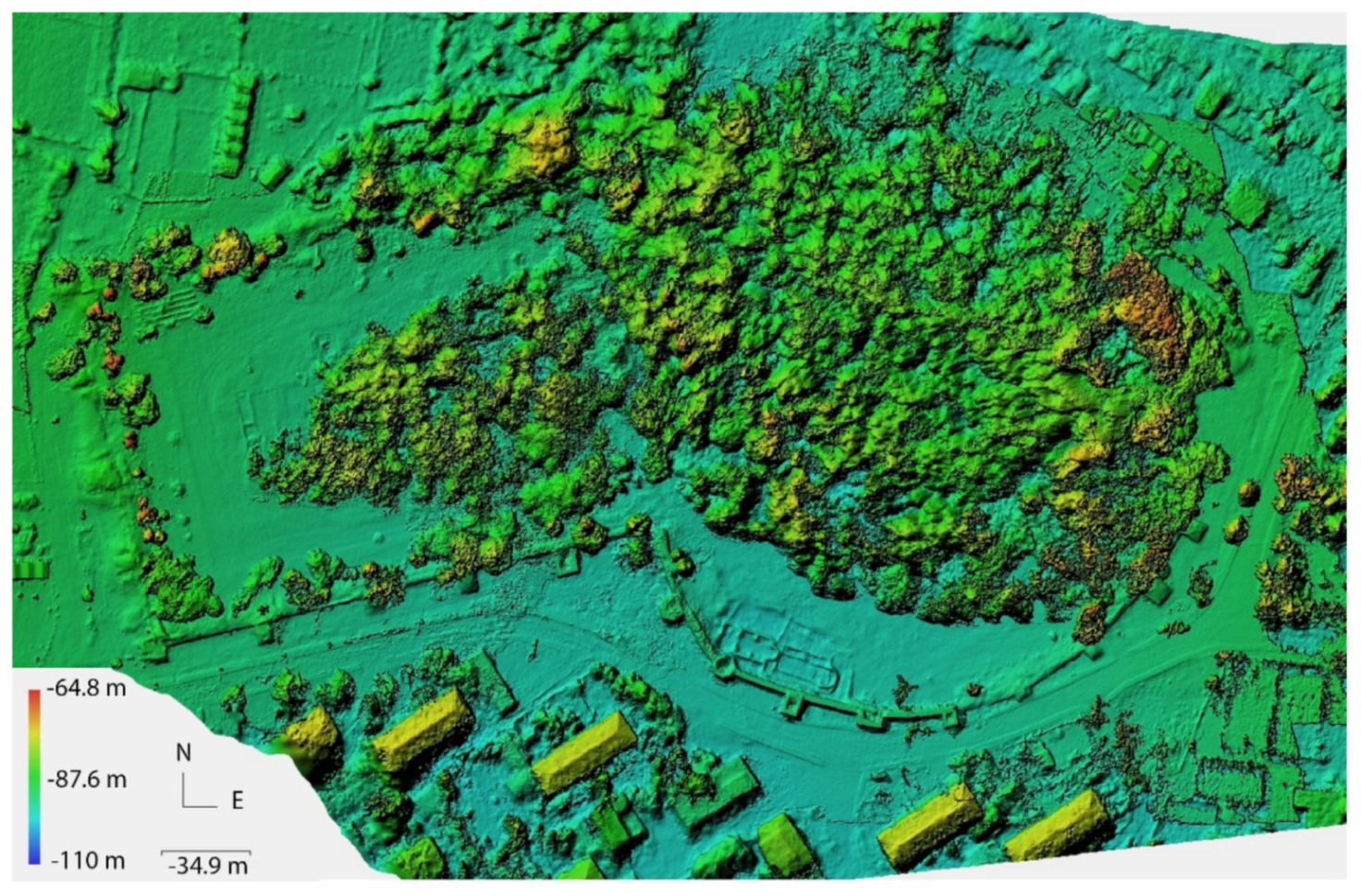

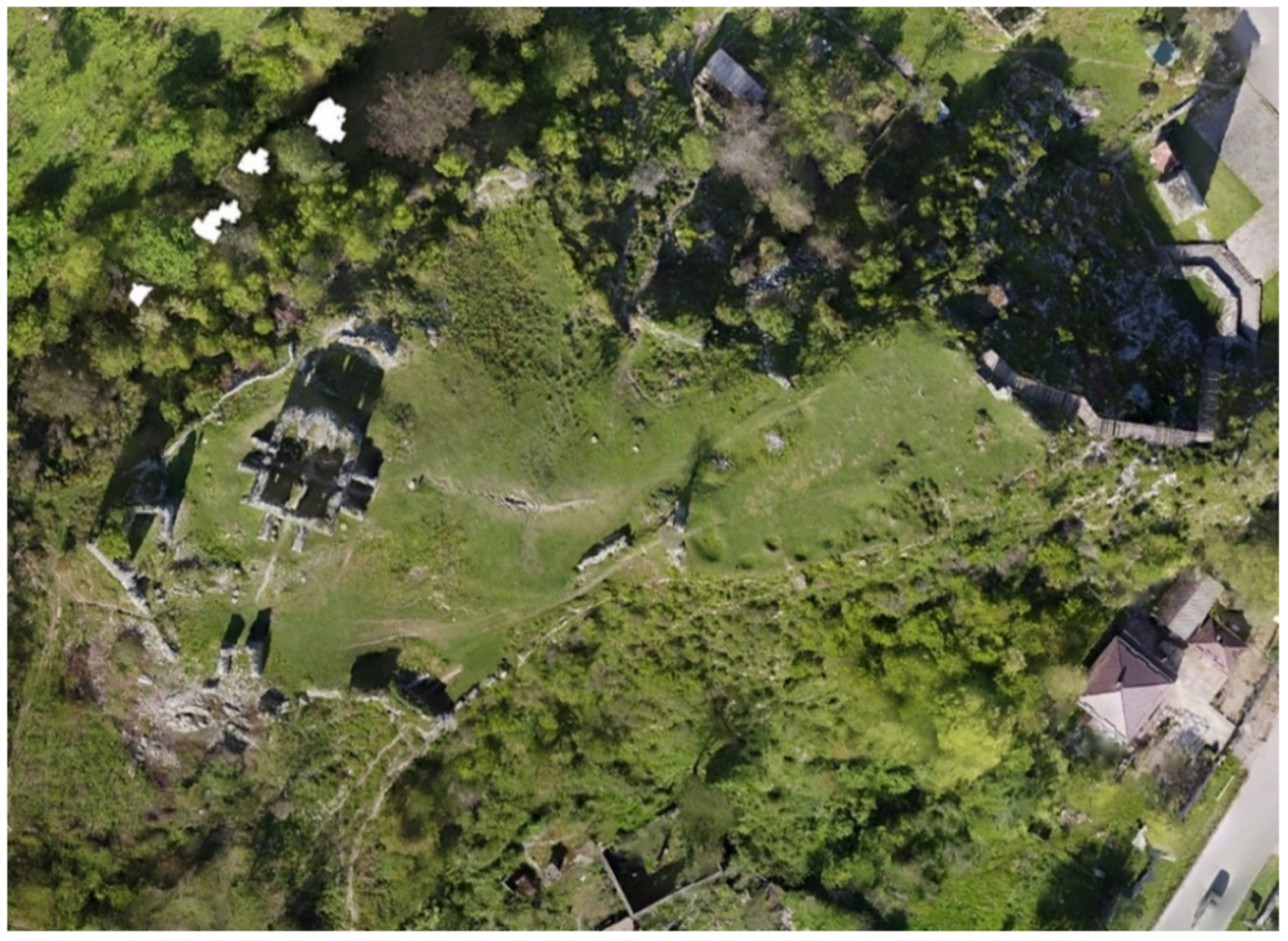
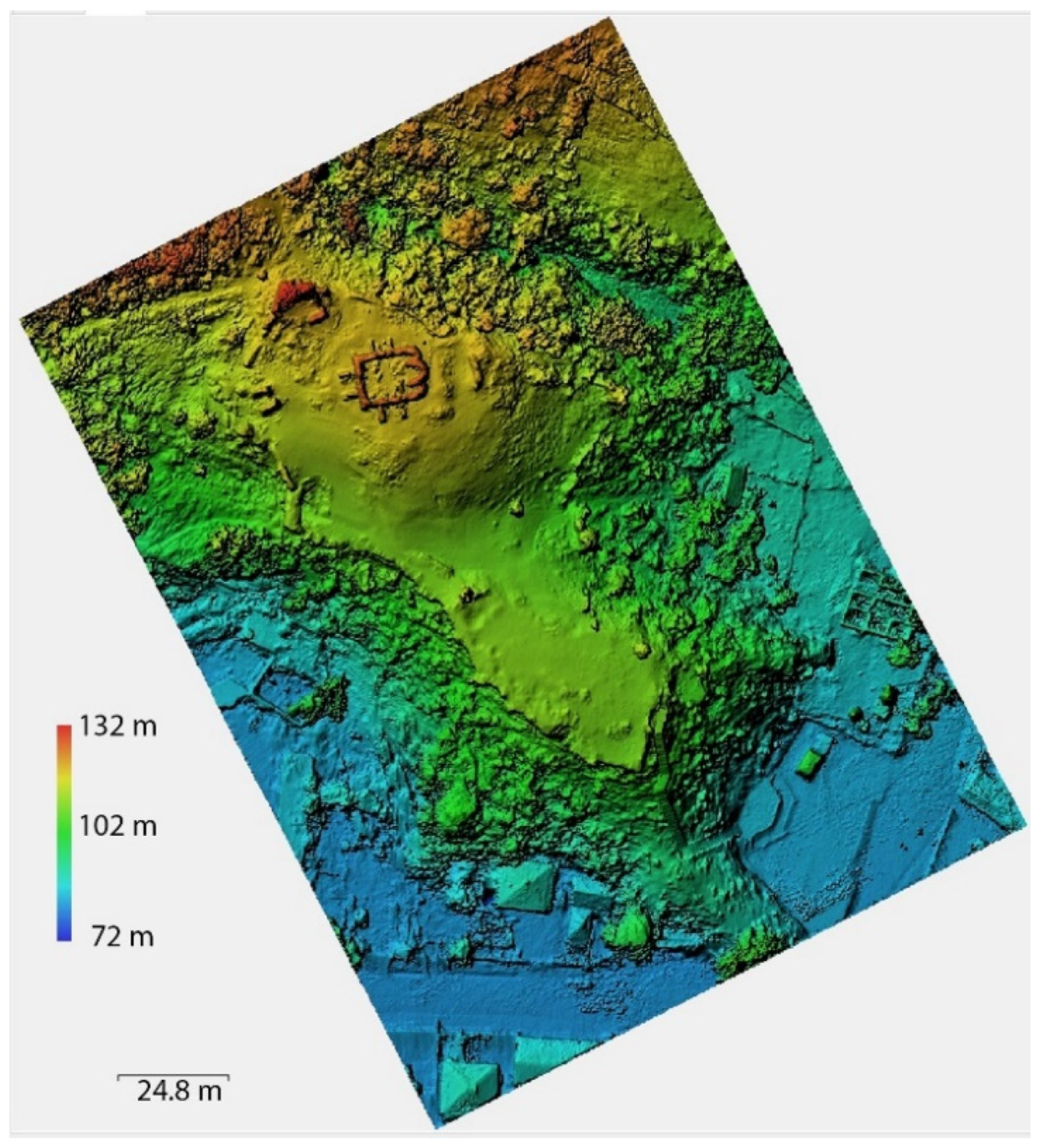
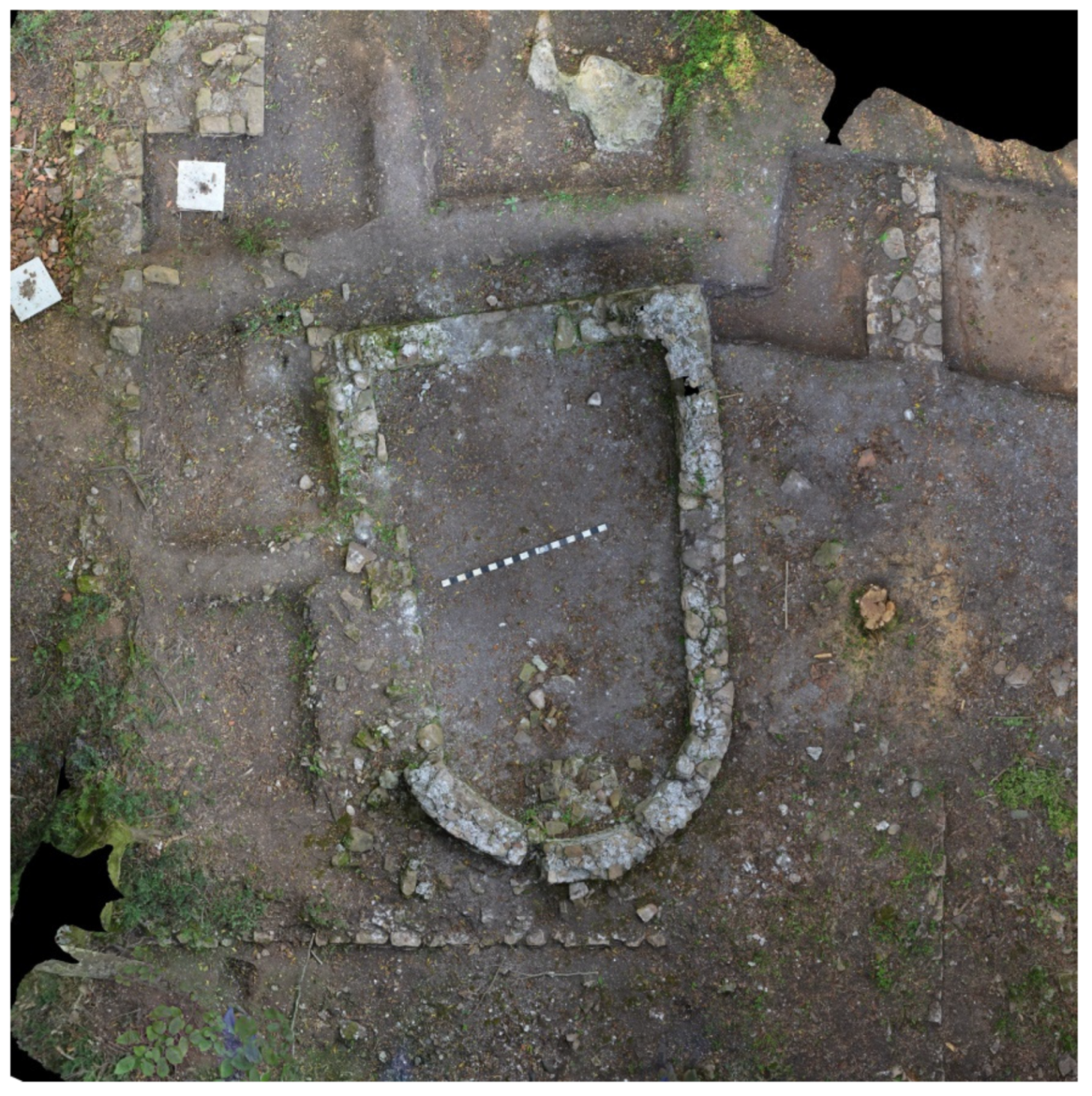
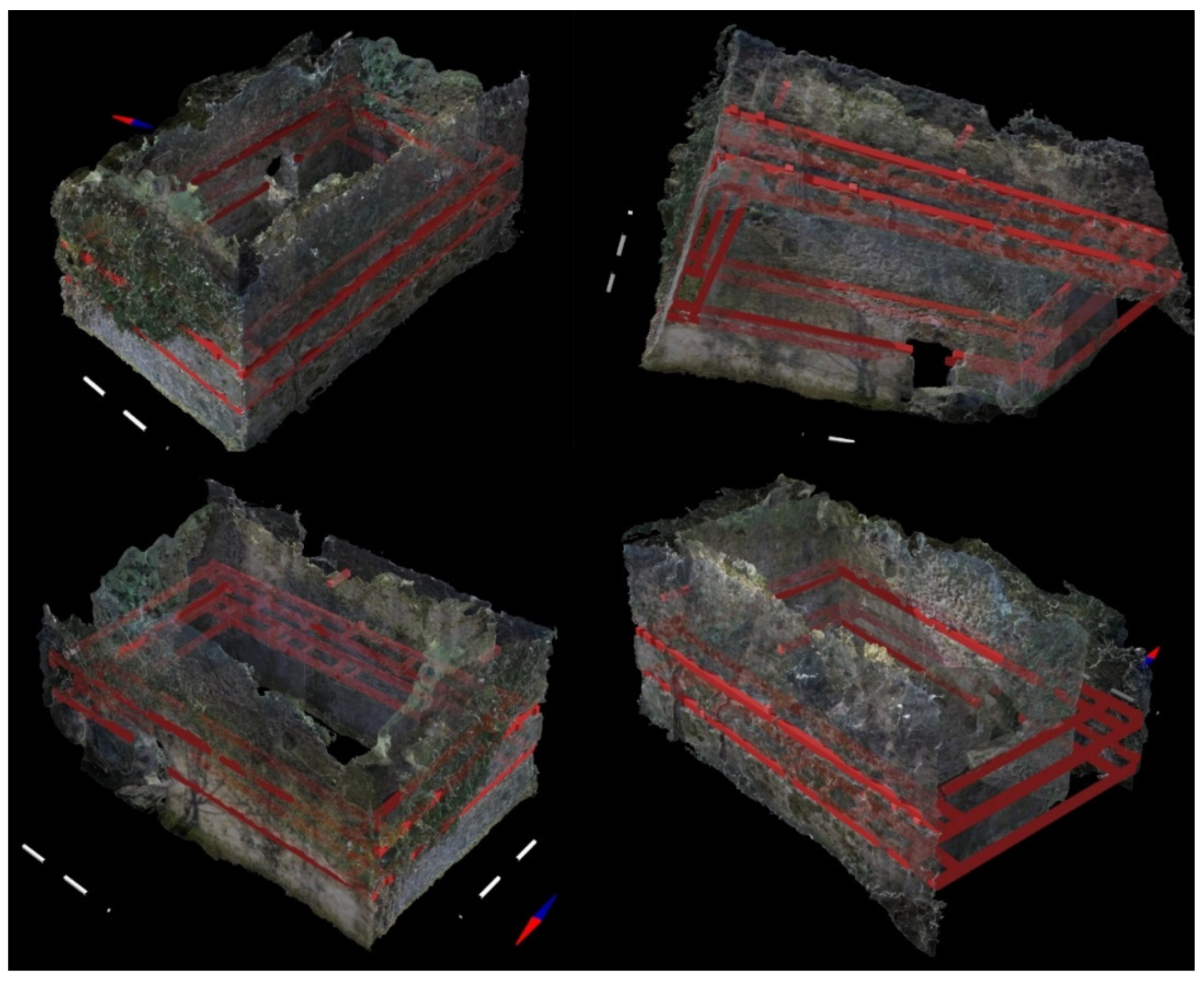
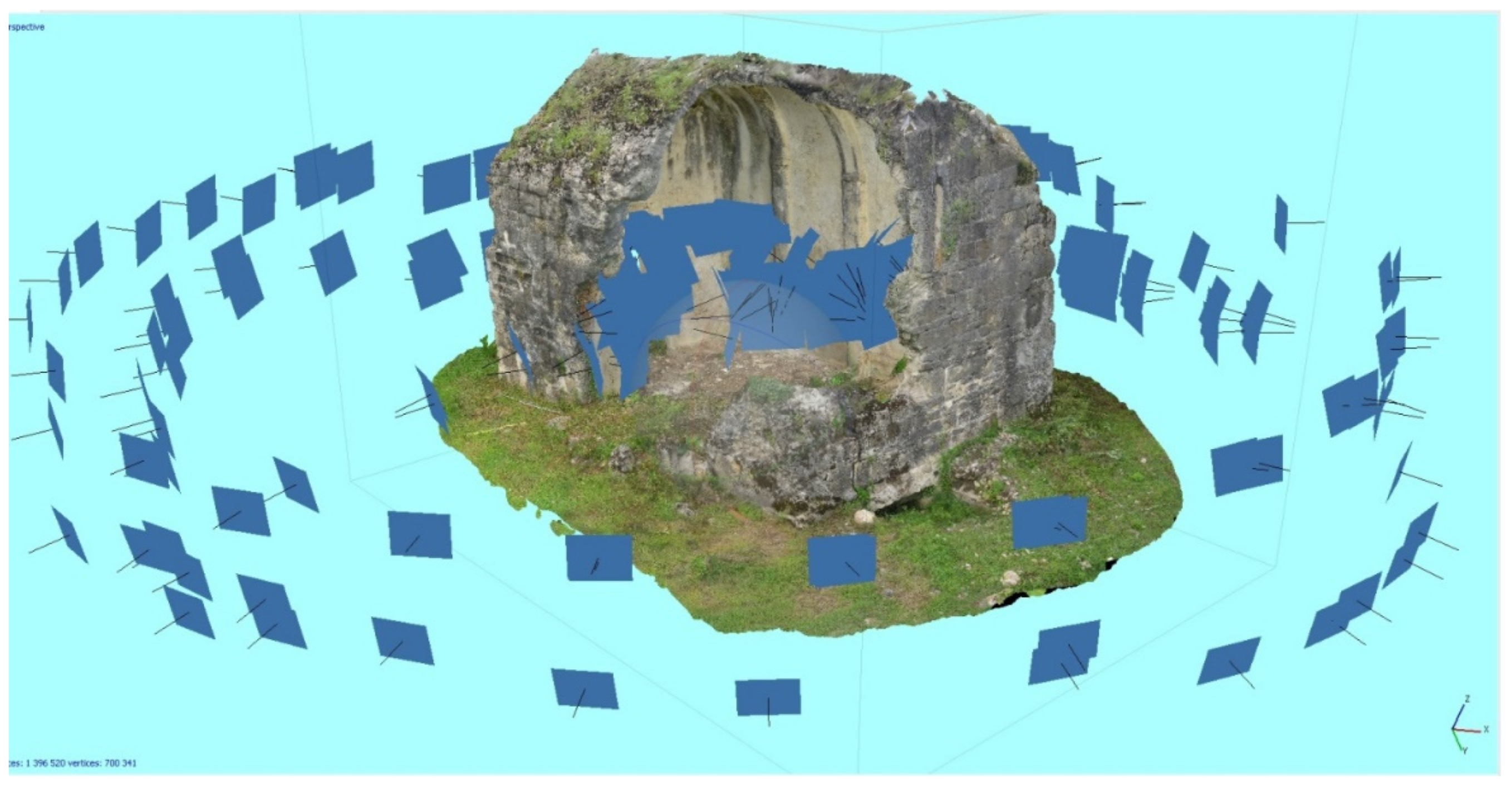




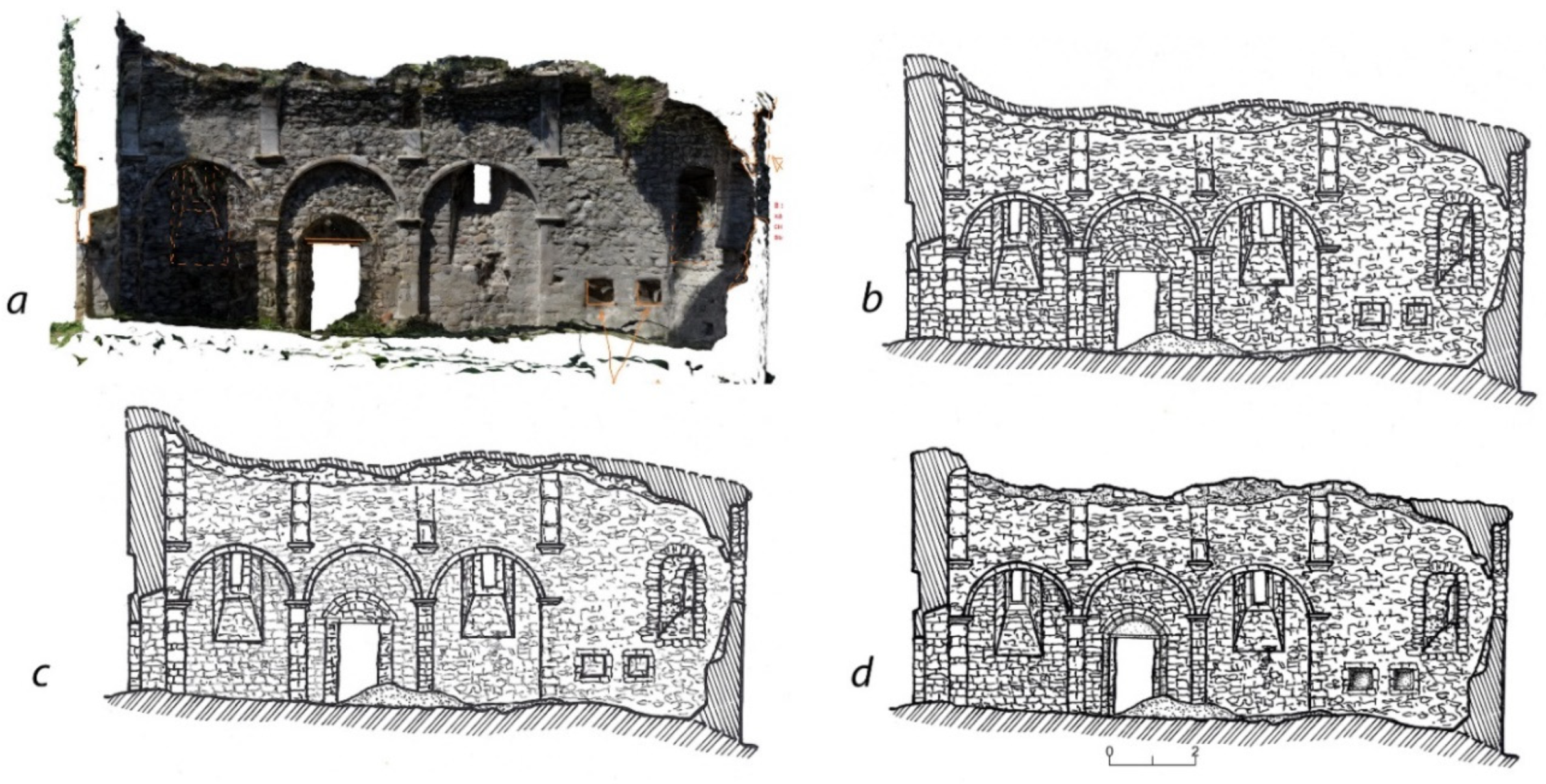
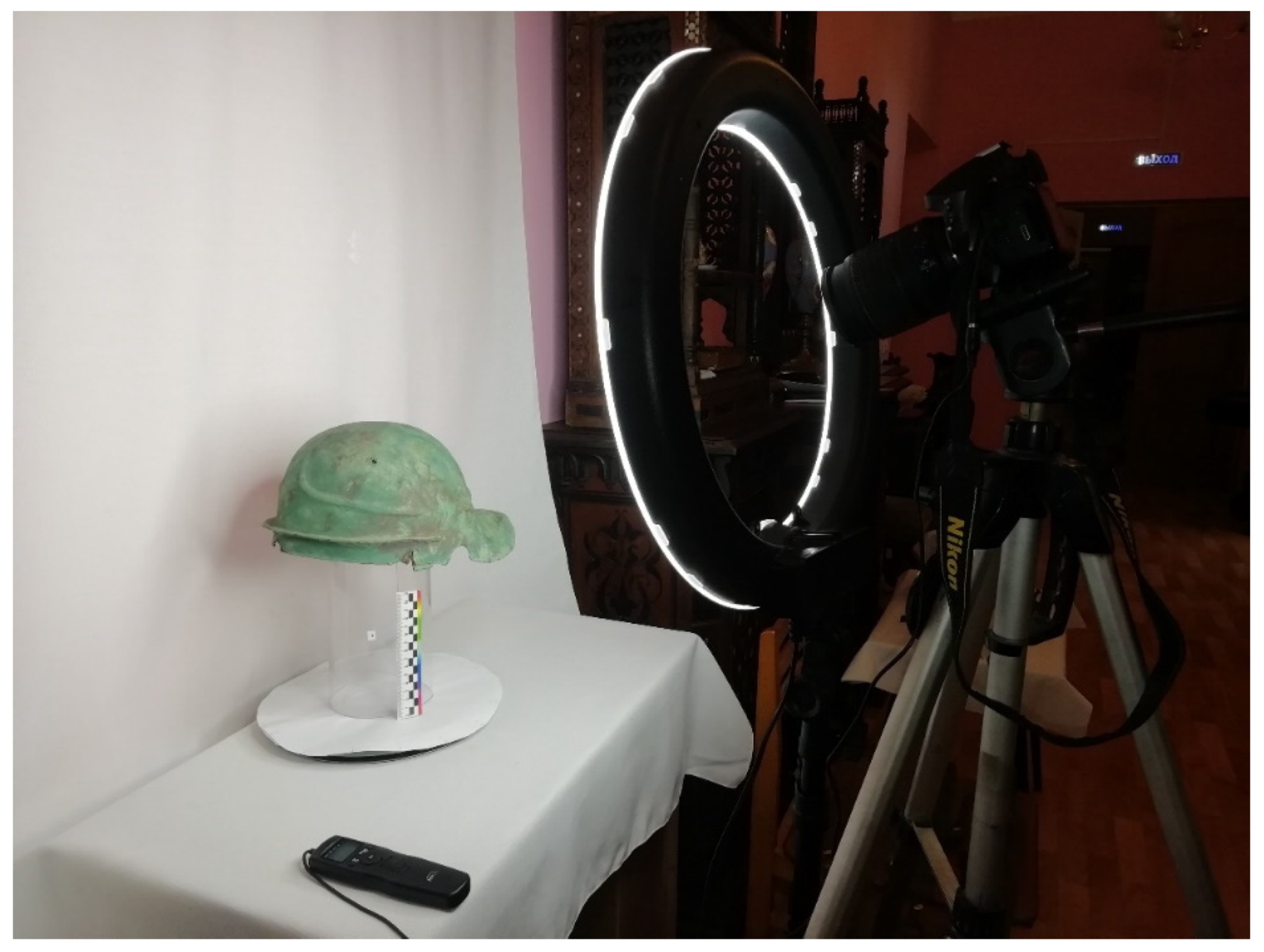
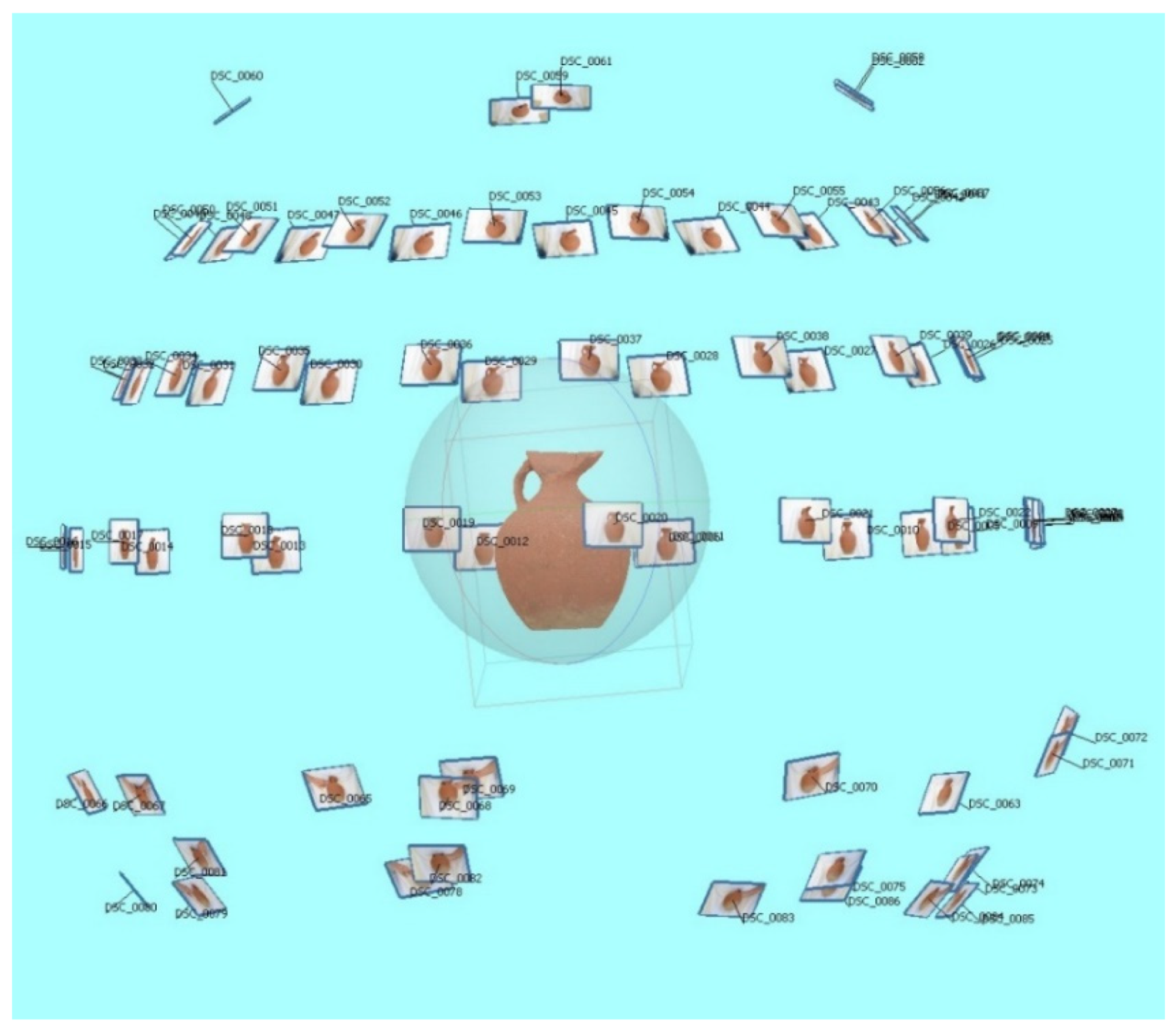
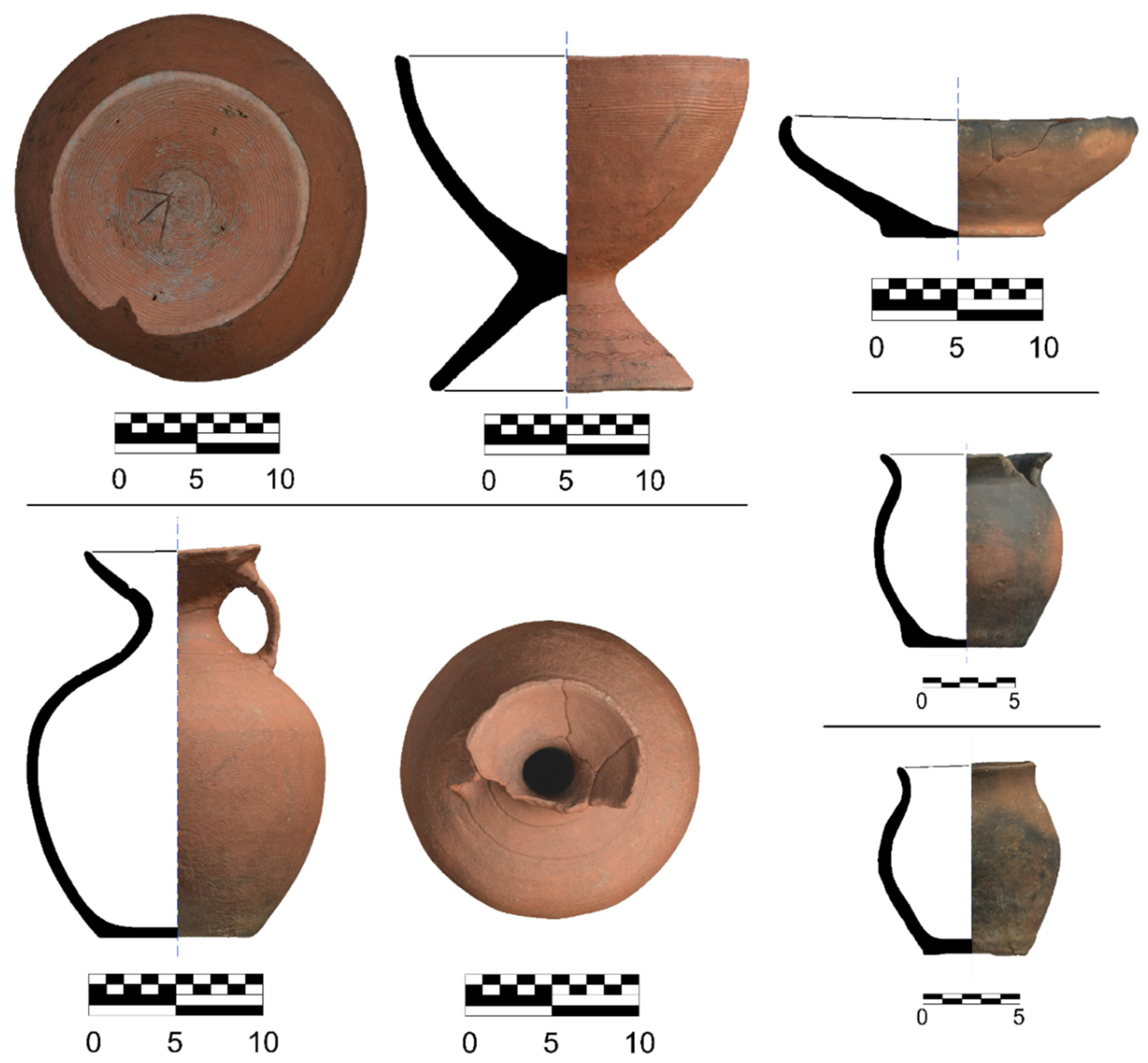
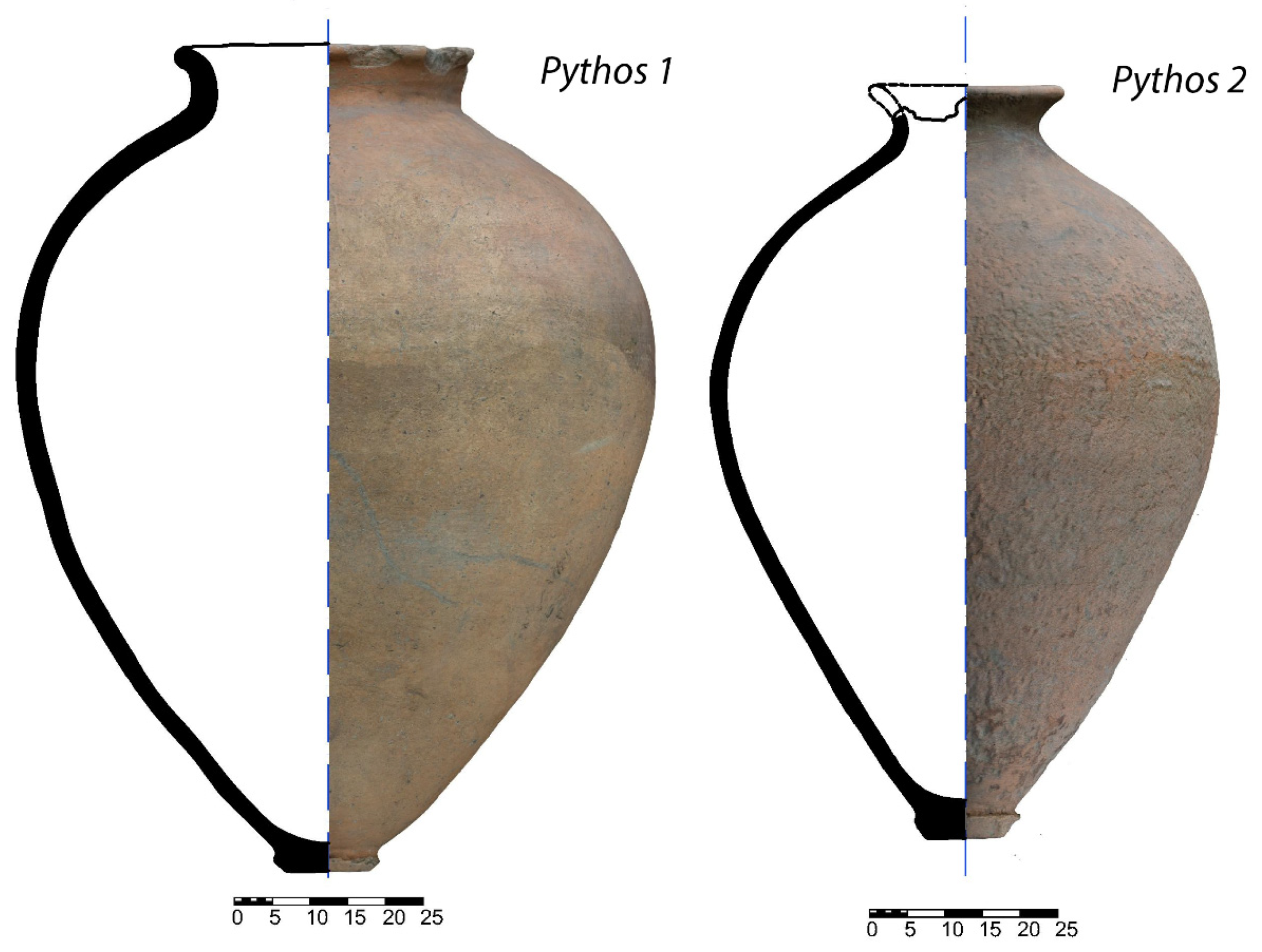
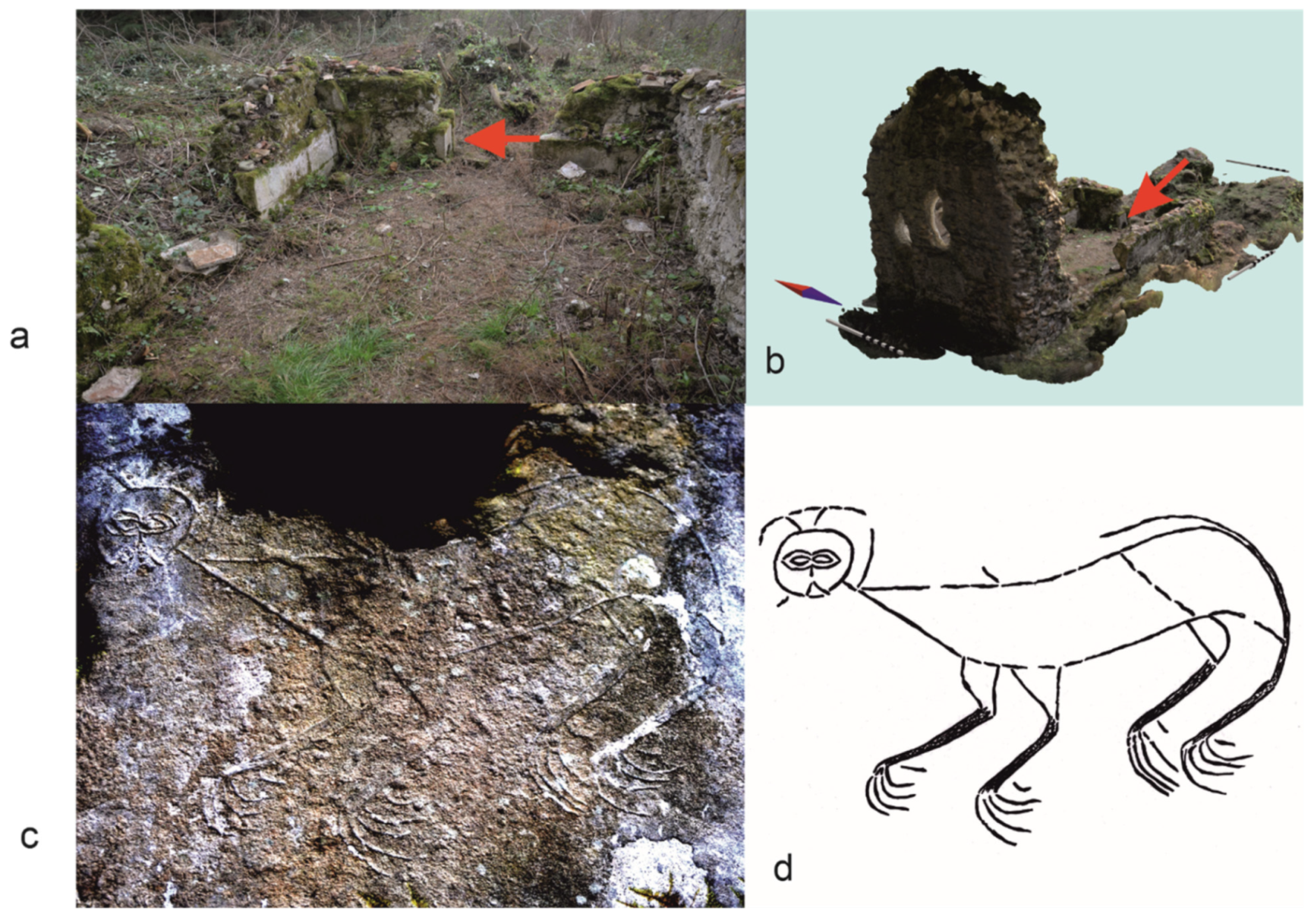
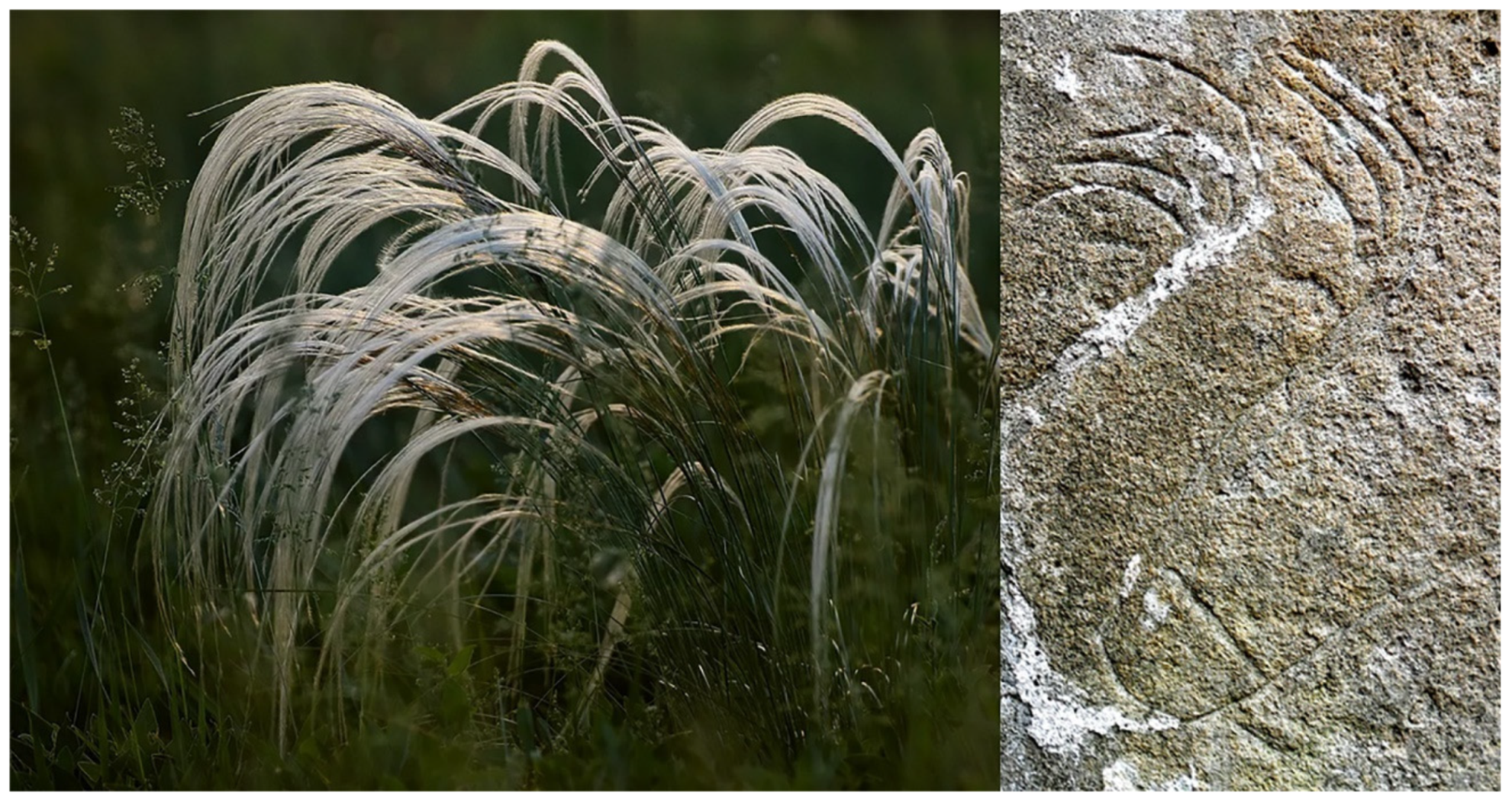
Publisher’s Note: MDPI stays neutral with regard to jurisdictional claims in published maps and institutional affiliations. |
© 2022 by the authors. Licensee MDPI, Basel, Switzerland. This article is an open access article distributed under the terms and conditions of the Creative Commons Attribution (CC BY) license (https://creativecommons.org/licenses/by/4.0/).
Share and Cite
Trebeleva, G.; Glazov, K.; Kizilov, A.; Kizilova, A.; Yurkov, V.; Yurkov, G. Advanced Technologies Used in Digitizing the Cultural Heritage of Northwestern Colchis: The Experience of the Markul Expedition. Appl. Sci. 2022, 12, 2052. https://doi.org/10.3390/app12042052
Trebeleva G, Glazov K, Kizilov A, Kizilova A, Yurkov V, Yurkov G. Advanced Technologies Used in Digitizing the Cultural Heritage of Northwestern Colchis: The Experience of the Markul Expedition. Applied Sciences. 2022; 12(4):2052. https://doi.org/10.3390/app12042052
Chicago/Turabian StyleTrebeleva, Galina, Konstantin Glazov, Andrey Kizilov, Anastasya Kizilova, Vladlen Yurkov, and Gleb Yurkov. 2022. "Advanced Technologies Used in Digitizing the Cultural Heritage of Northwestern Colchis: The Experience of the Markul Expedition" Applied Sciences 12, no. 4: 2052. https://doi.org/10.3390/app12042052
APA StyleTrebeleva, G., Glazov, K., Kizilov, A., Kizilova, A., Yurkov, V., & Yurkov, G. (2022). Advanced Technologies Used in Digitizing the Cultural Heritage of Northwestern Colchis: The Experience of the Markul Expedition. Applied Sciences, 12(4), 2052. https://doi.org/10.3390/app12042052









